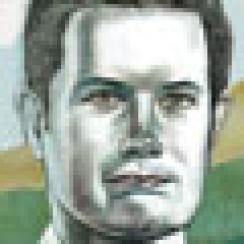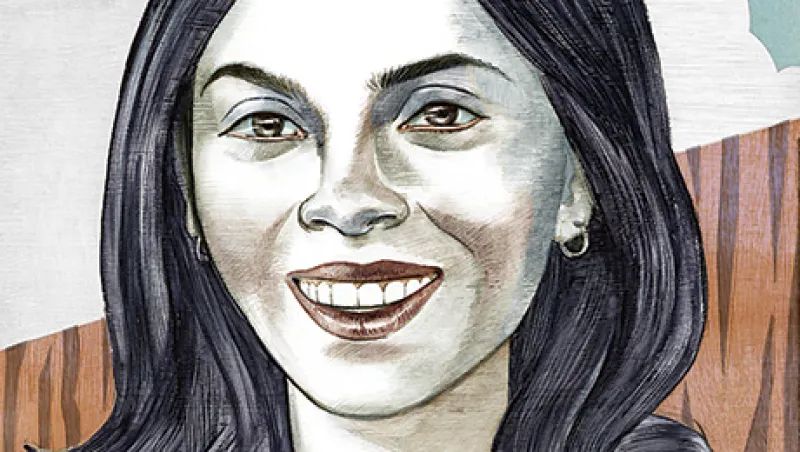For Nehal Chopra, investing is all about people. As an event-driven long-short equity manager looking for companies undergoing significant change, Chopra is very focused on the quality of corporate management — in particular, CEOs. She wants to know who they are, why they are in their positions and how they get paid.
“My mom taught me very early on that people matter,” says Chopra, 34, who grew up in Mumbai and came to the U.S. in 1998 to attend the University of Pennsylvania’s Wharton School. “We invest only with A-plus managers and A-plus CEOs.”
That formula has worked well for Chopra since she launched the Tiger Ratan Capital Fund in May 2009 with $25 million in seed money from legendary hedge fund manager Julian Robertson Jr. The now-$750 million fund has delivered net annualized returns of more than 20 percent and was up 46.8 percent in 2013. Chopra recently moved Ratan Capital Management to new digs one block away from the Park Avenue offices of Robertson’s Tiger Management Corp., which she called home for Ratan’s first five years.
Like many hedge fund managers who got their start under the tutelage of Tiger, Chopra is extremely competitive. As a teenager she was a top-ranked tennis player in India. At Wharton she was accepted into the elite submatriculation program and began taking classes for her MBA at the same time she was completing her BS in economics. She spent the first few years of her career as an investment banking analyst in New York, first at UBS and then at Lehman Brothers Holdings, before joining the event-driven-investment team at alternative-asset manager Ramius as an analyst in 2005. There she tried to find merger targets and spin-offs that could make the firm a quick 20 to 30 percent return.
“If the event happened, we would generally sell the security, and I would then watch the spun-off entity go up a lot more,” she says. “And I would wonder, Why are we working so hard to make 20 to 30 percent with a short-term view when we can make 200 to 300 percent with a long-term view?”
Chopra got the chance to manage her first portfolio in 2007, when she jumped to multistrategy hedge fund firm Balyasny Asset Management. There she refined her strategy of identifying great companies that were undergoing major changes but waiting for the changes to happen before actually investing in them. “Corporate change creates confusion, and that confusion creates price dislocation,” Chopra explains. “We want to take advantage of those mispricings to generate returns over a long period of time. So we look for spin-offs, companies emerging from bankruptcy, transformational mergers and new-CEO situations.”





|
Working out of Tiger’s Park Avenue offices with just a single analyst to assist her, Chopra began constructing her portfolio. One of her first investments was a small specialty drug company called Valeant Pharmaceuticals International, which had hired former McKinsey & Co. executive J. Michael Pearson as CEO in 2008. When Chopra learned that Pearson had grown the consulting firm’s global pharmaceuticals practice tenfold over ten years and that his former colleagues at McKinsey were buying stock in Valeant, she was intrigued. After more analysis she realized that the drugmaker had a good business but had been mismanaged and had huge potential for cost-cutting.
“When we met the CEO, he said: ‘I’m going to fix legacy Valeant. Once I fix Valeant, I’m going to go out there and buy more companies that are like Valeant — mismanaged and badly run — and fix them.’” Chopra recalls. “And I was thinking, If you just fix Valeant, it will be a great investment.”
Pearson fixed Valeant. He slashed R&D spending and instead focused on buying small drugmakers with products already on the market in areas, like dermatology, that don’t compete head-to-head with Big Pharma. In June 2010, Valeant announced that it was merging with Biovail Corp., Canada’s largest drugmaker, in what Chopra calls a transformational deal. When Tiger Ratan started buying Valeant in 2009, the company had $830 million in annual revenue and a $2 billion market cap. Today, Quebec-based Valeant has close to $6 billion in annual revenue and a $42 billion market cap.
For Tiger Ratan, Chopra runs a concentrated portfolio, with 20 to 25 core long positions and 20 to 35 shorts. She looks for companies like Valeant, with strong free cash flow, and avoids those in industries that are cyclical or tied to the strength of the economy. “If you buy a commodity business and the price of copper goes from $2 to $1 a pound, it doesn’t matter how great the CEO is,” Chopra explains. “We want to find businesses where the CEO can have a lot of impact.” Not surprisingly, Tiger Ratan tends to own health care, consumer staples and services companies.
Because Chopra focuses on catalyst-driven investments that can take three years or more to deliver their full potential and runs a concentrated portfolio, she doesn’t need a big team. Ratan Capital has just six people, split evenly between investing and operations. “We’ll always have a lean investment team,” Chopra says. “I tend to be very involved in every idea, and that is never going to change. If we get too big, I’ll end up becoming the bottleneck.”






